Emergency Response
The tool library has been working to improve our resources to support members during emergencies. We sought and received a grant from the PSE Foundation for the purchase of emergency equipment. That equipment has now been purchased and is available to check out. Our thanks to the PSE Foundation for their generous help.
We got a lot of good stuff that can be very helpful in difficult situations, and we hope that each of you will acquaint yourselves with our resources and use them when you need them. These are not just for big emergencies like an earthquake – they can be very useful in a local crisis like the February 2019 snowstorms. Be sure and return these tools clean and fully charged.
In particular, islanders often have problems with downed or damaged trees, and several of our emergency tool purchases emphasize dealing with those problems. But tools are one thing and techniques are another. For a comprehensive education in how to deal with difficult or dangerous tree felling and clearing situations, we recommend the YouTube series by Terry Hale. He has numerous videos explaining all aspects of these jobs and they are well worth a look. He does a great job explaining just why some situations are particularly tricky or dangerous, even if it’s not obvious, and then what to do to keep safe while getting the job done. His instructions involve many of the items shown below – chainsaws, peaveys, choker cables and come-alongs.
Chainsaws
We purchased three DeWalt battery operated chainsaws. They each have a 16″ bar, and a bag carries their battery, charger, the manual, and some bar oil. We have had really good reports from the members on these – they are very useful for jobs that are not too big. Really large trees will be too difficult for these, but they are great for cleaning up modestly sized downed trees and limbing fallen trees. The battery is quickly charged and lasts a long time. As with any chainsaw, you need to be careful and focus your attention while using this tool. For a brief Youtube video on chainsaw safety, click here.
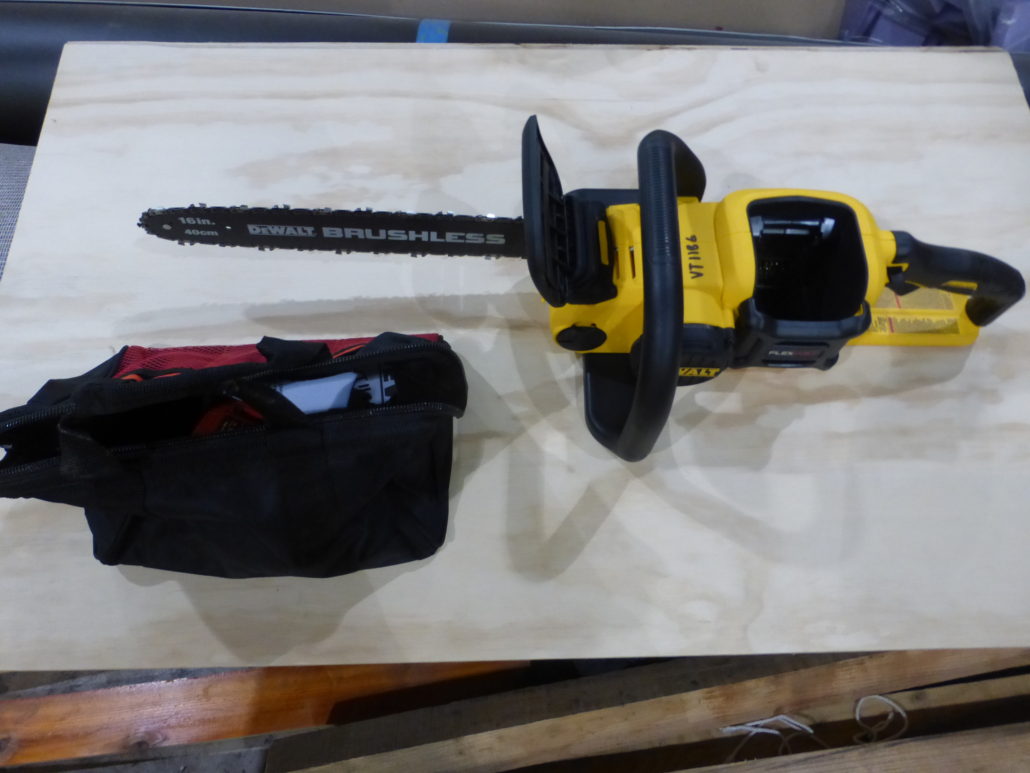
Peaveys
We also picked up three peaveys. The peavey is a useful tool for handling downed logs. Basically a pointed stick with a hook attached, it has been used in logging since the 1850s. Very handy for handling cut logs, rolling them out of one position and into another. The long handle gives great leverage to allow even heavy logs to be moved. Once again, be careful with this tool – logs are heavy and can be dangerous. There are some good YouTube videos on how to handle a peavey. Peaveys are particularly useful for cutting up (bucking) a downed log, as they allow you to turn the log over when halfway through to prevent the chainsaw from going into the dirt and dulling the blade.
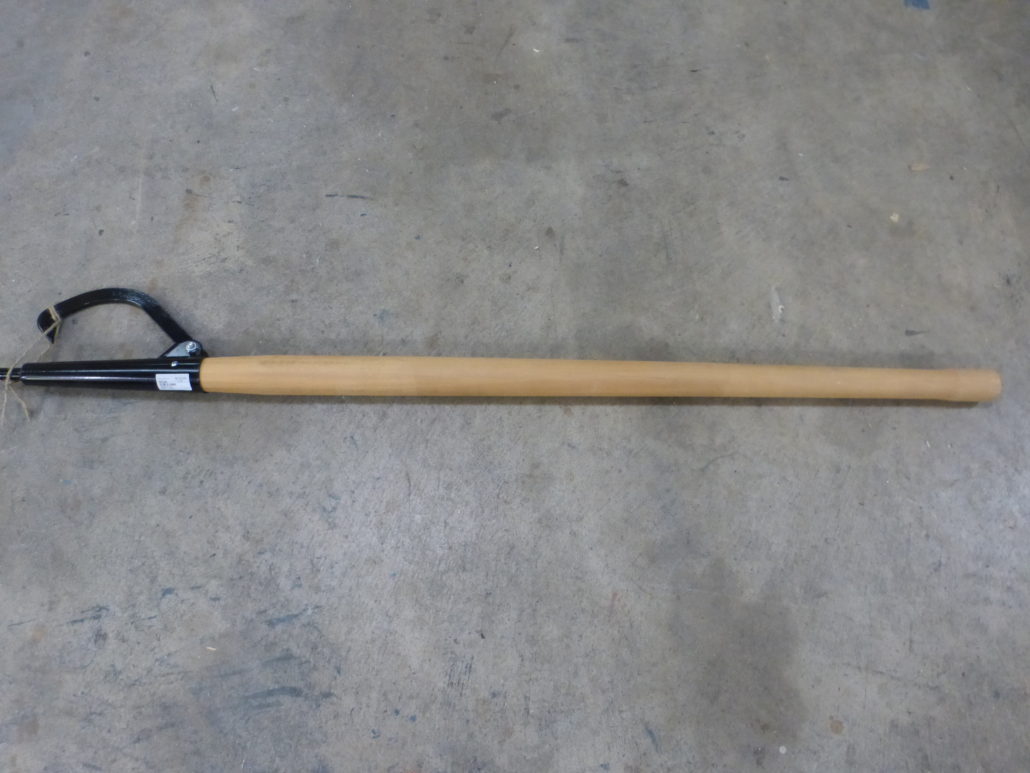
Pole Saws
These small chainsaws on the end of a pole are very useful for trimming limbs partway up a tree. Caution is required in using this tool. In cutting limbs and debris loose over your head, stand in a safe position and use head and eye protection. Be careful not to get the tool pinched by the partially cut limb, as this can trap the tool well above your head. As with all chainsaws, keep the oil container well filled. Avoid going near electrical lines with this device.
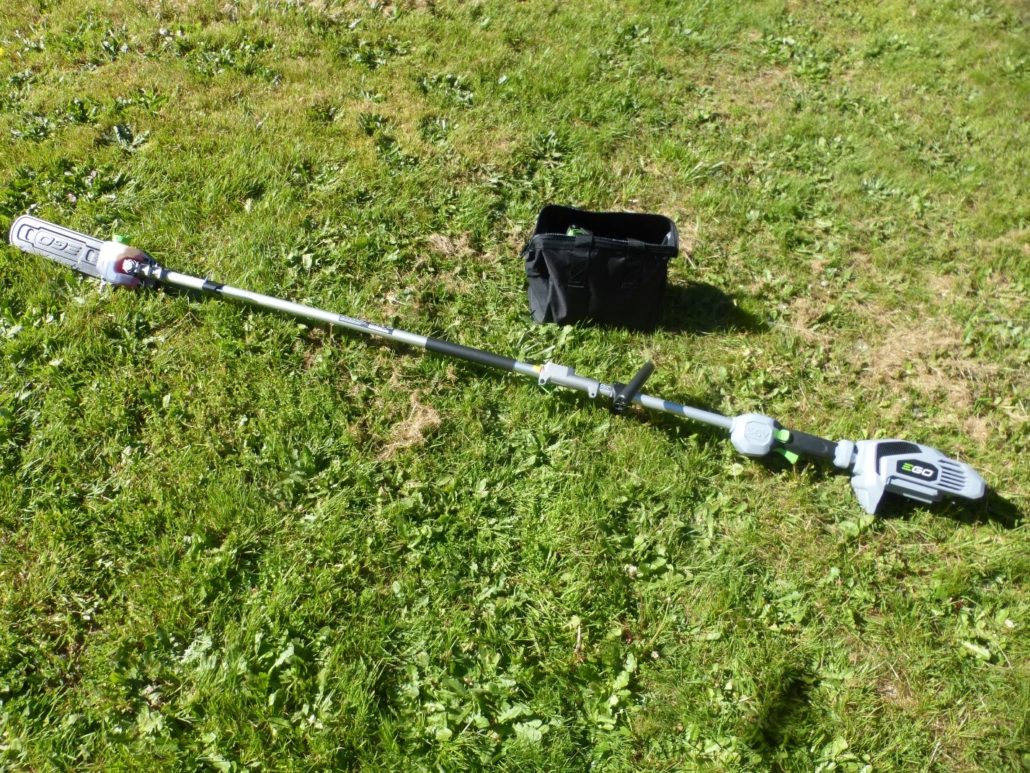
Button and bell cable chokers
We have three heavy-duty cables for hauling logs. These cables are easily slipped around downed logs and can then be attached to a vehicle or come-along that will haul the log to wherever you need it. Variations of this tool are used by loggers everywhere. Once again, be careful with this tool. Logs are heavy, and the tension required to make these work can be dangerous if the cable is not attached firmly at both ends. You also need to be careful that whatever you are hauling doesn’t get away from you and start rolling around. We have a 10 foot length, a 15 foot, and a 20 foot.
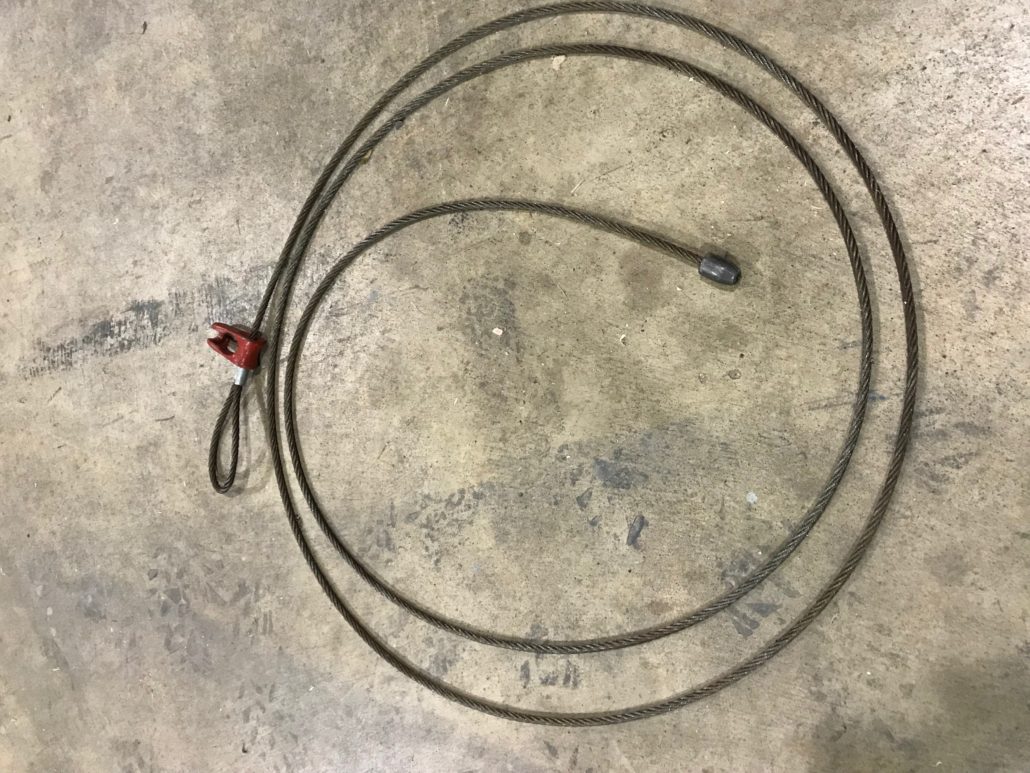
ComeAlongs
We purchased three new heavy duty come-alongs to help with moving heavy objects of all kinds. These are manual tools, relying on your own strength to work, but they have a lot of leverage and can pull loads up to 8,000 lbs. They are simple to operate and are really helpful for tough jobs. Like the choker cables, they can operate at very high tension levels, so it’s important to make sure that they are firmly and solidly attached at both ends and that they’re pulling in the direction you want them to. You don’t want them coming loose at unexpected moments.
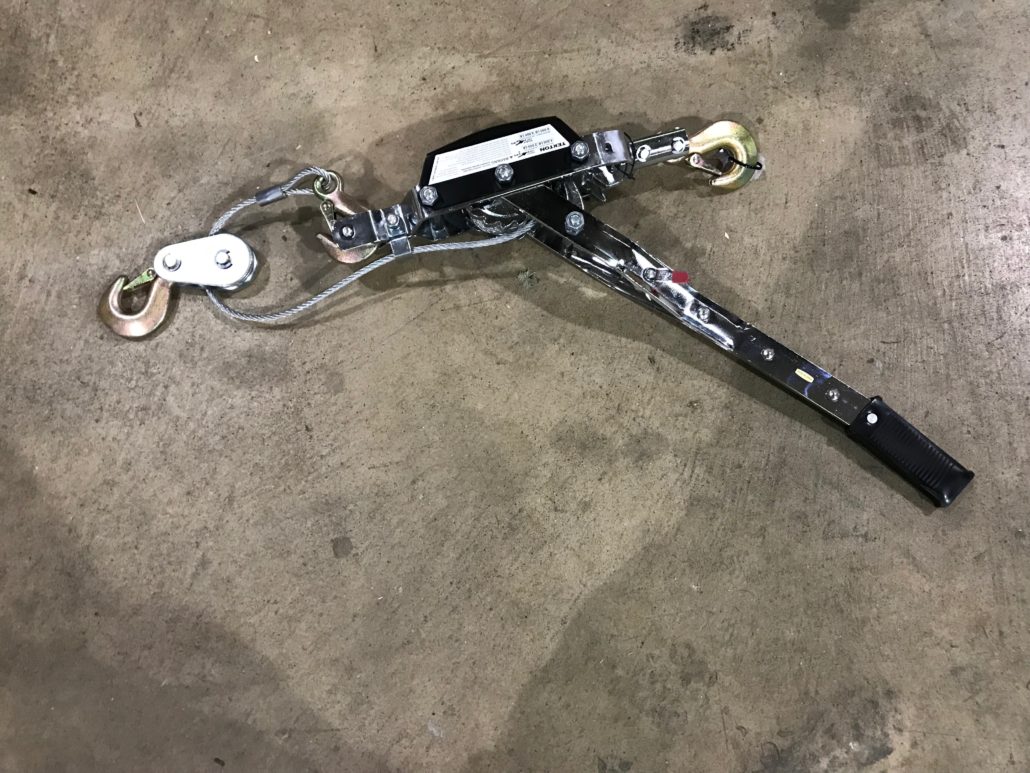
Pry Bars
We have purchased several heavy duty pry bars to help with heavy lifting and prying jobs. There are three straight versions, about six feet long, and three shorter hooked versions, about 48″ long. Both types are very strong for use with heavy prying and/or digging jobs.
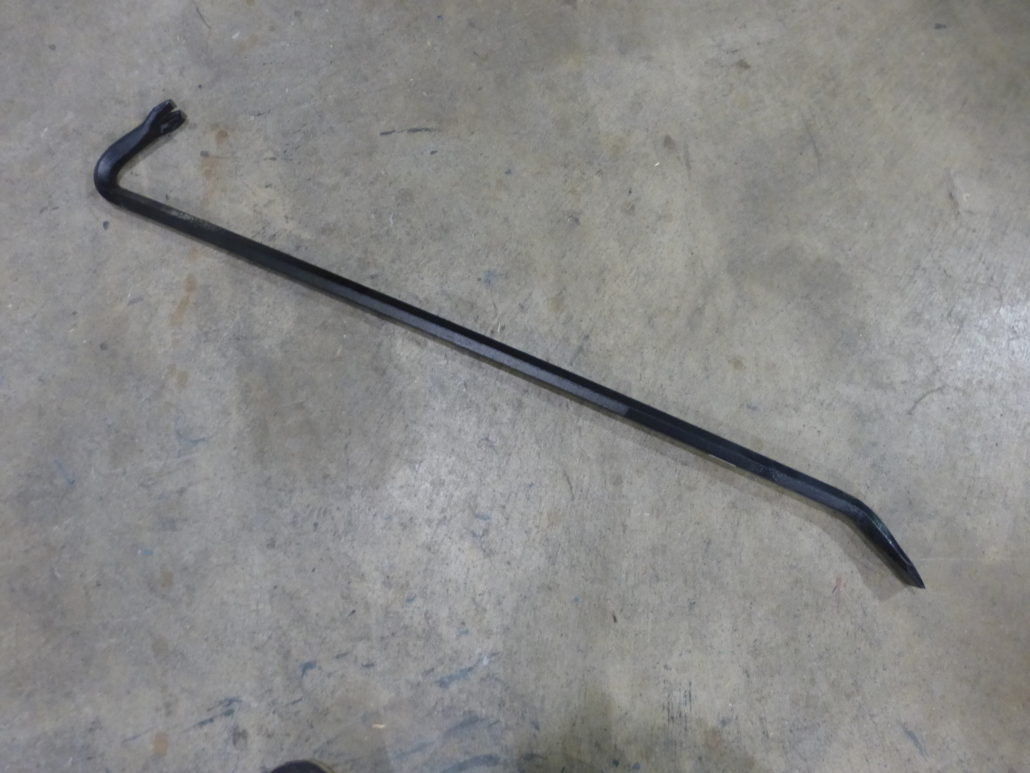
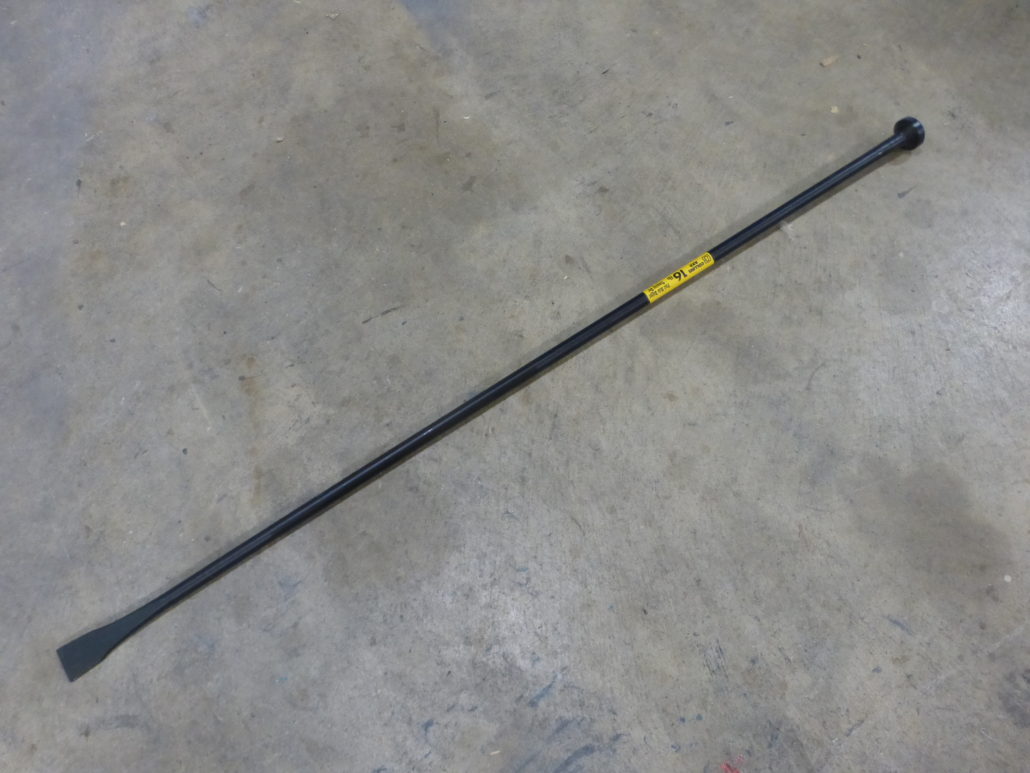
Reciprocating Saws (Sawzalls)
We also picked up three battery operated reciprocating saws for cutting through tough materials with relative ease. These saws will handle cutting through wood even with nails in it and are often used for challenging construction or demolition work. They come with a bag containing the battery, charger, and manual.
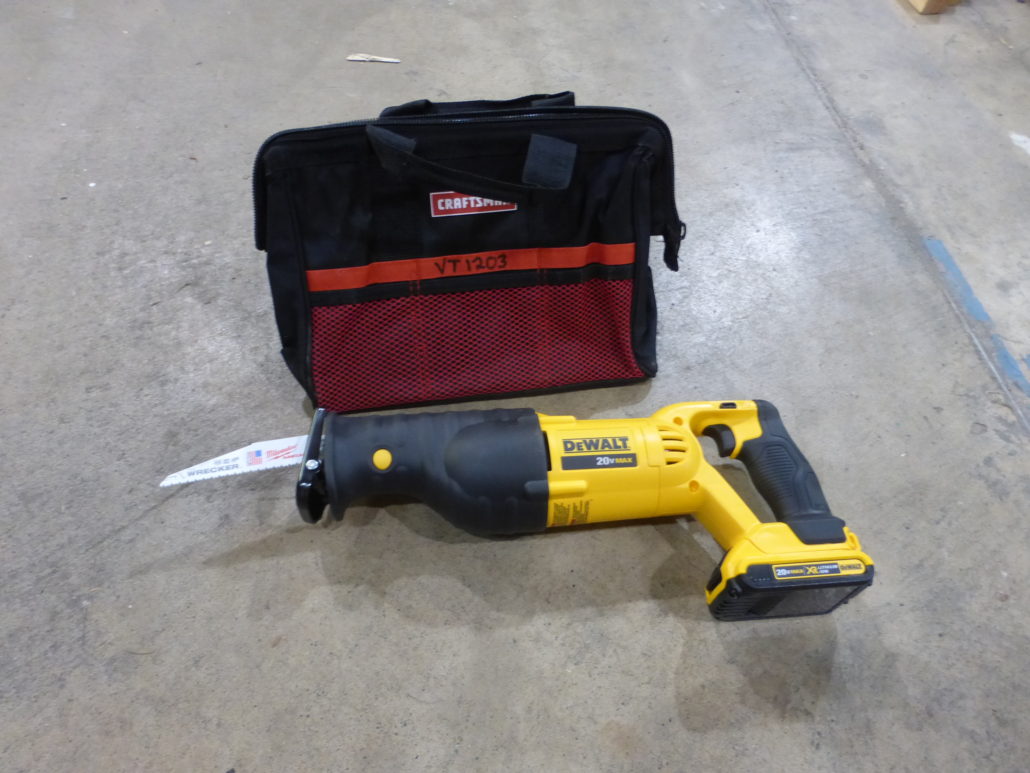
Bottle Jacks
These are for heavy lifting. Up to twelve tons. They are often referred to as house jacks, which suggests the weight they can handle. They MUST have a strong, perfectly level footing at their base, to ensure that they stay exactly vertical and avoid slipping sideways. You don’t want these tipping over at unexpected moments.
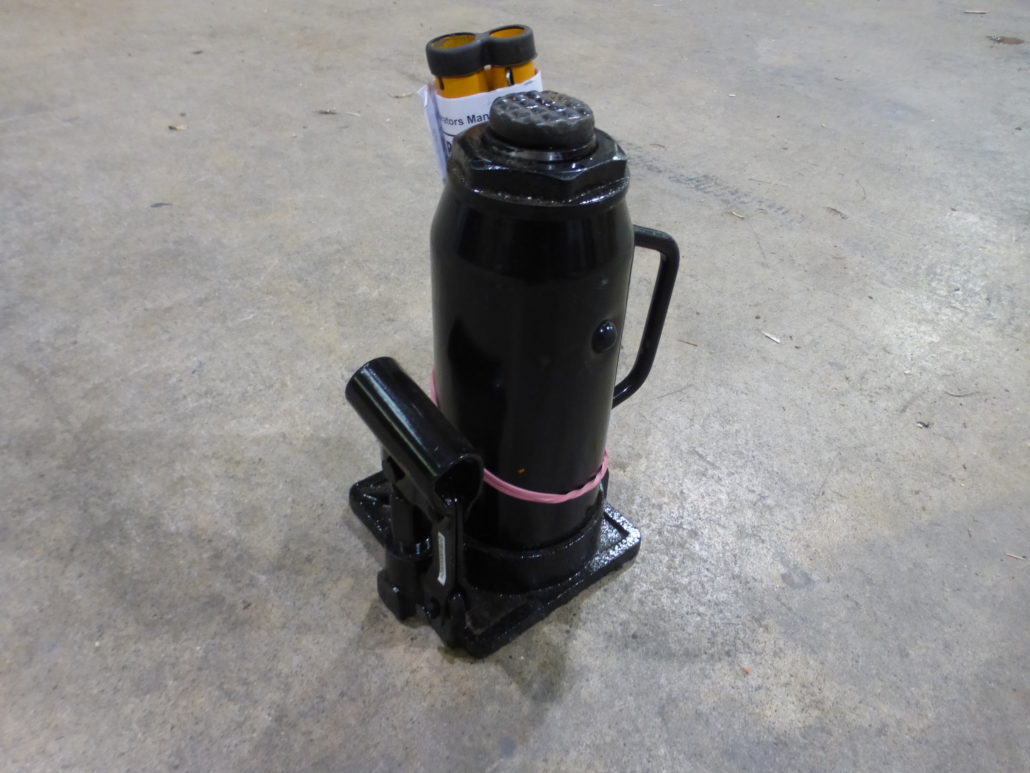
Electric Sump Pumps
We have three of these, designed for pumping out flooded areas. They require electricity to operate, but can handle great volumes of water and are very tough and durable.
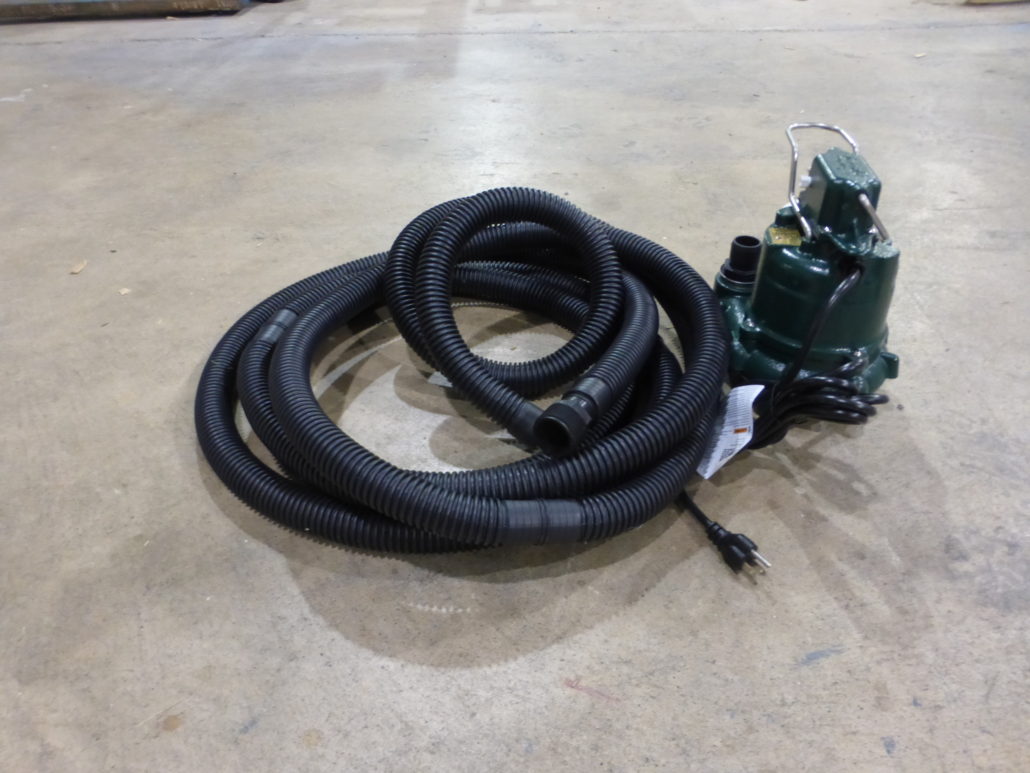
Manual Sump Pumps
And if the electricity goes out, you can still pump some of the water the hard way. We have three manual sump pumps, too. They’re handy as bilge pumps as well.
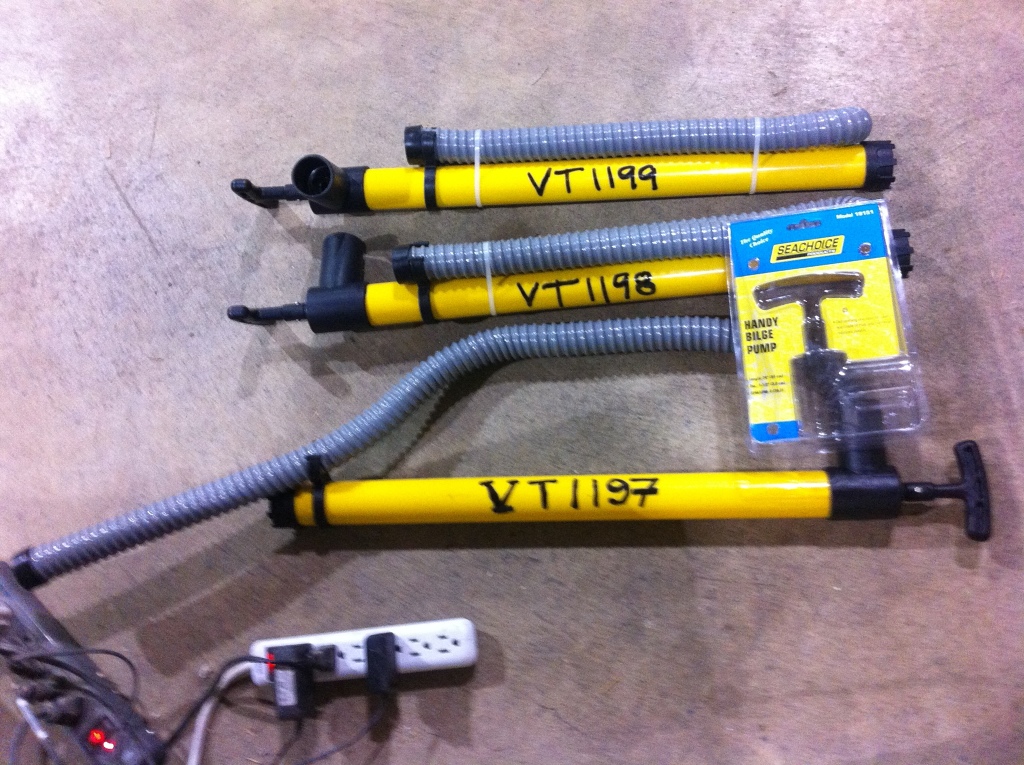
Voltage Detectors
These handy gadgets can tell whether an electrical circuit is live without touching it. You place them in proximity to a circuit and, if it’s live, they light up. We have three of these. They also have a plug-in end that can be used to test GFCI circuits – the ones in wet areas that are supposed to automatically cut off if there’s a short.
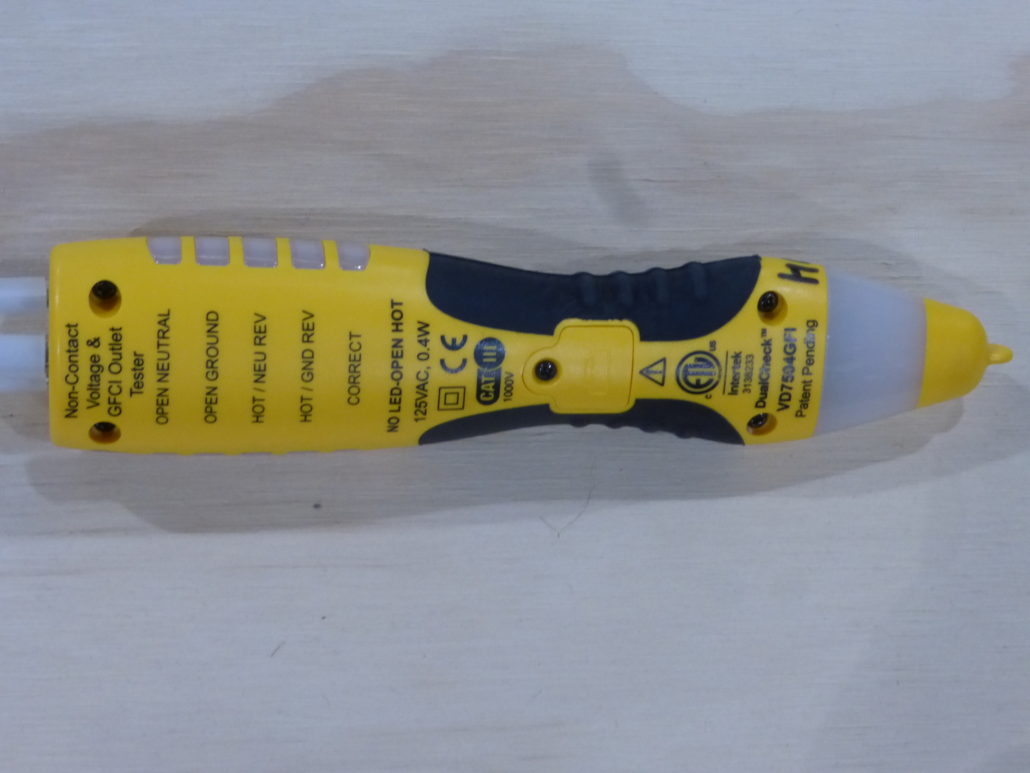
Infrared Scanning Thermometers
These devices can test the temperature of an area without touching it or going near. It uses a laser pointer to identify the temperature of whatever it is pointed at. Can be used to detect hidden hot spots, as well as check your home for heat leaks and poor insulation. We have two of these.
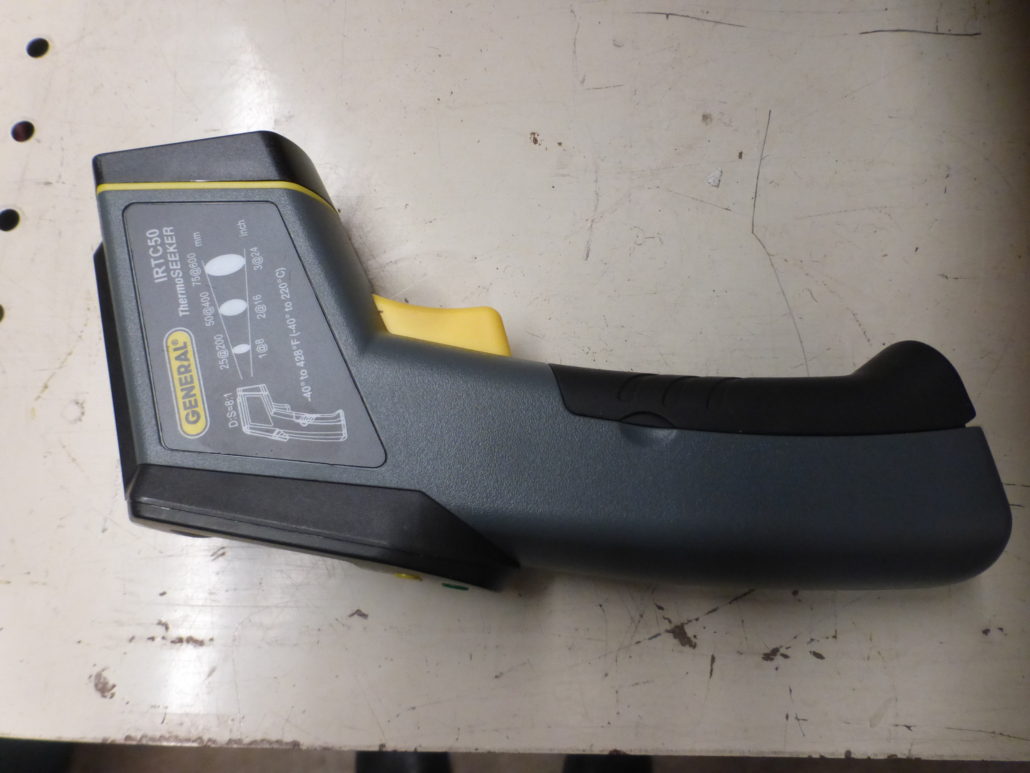
Gas Leak Detectors
Gas detector – for checking for leaks in gas lines or tanks. Will detect acetylene, butane, methane (natural gas) and propane. There are three of these in our inventory.
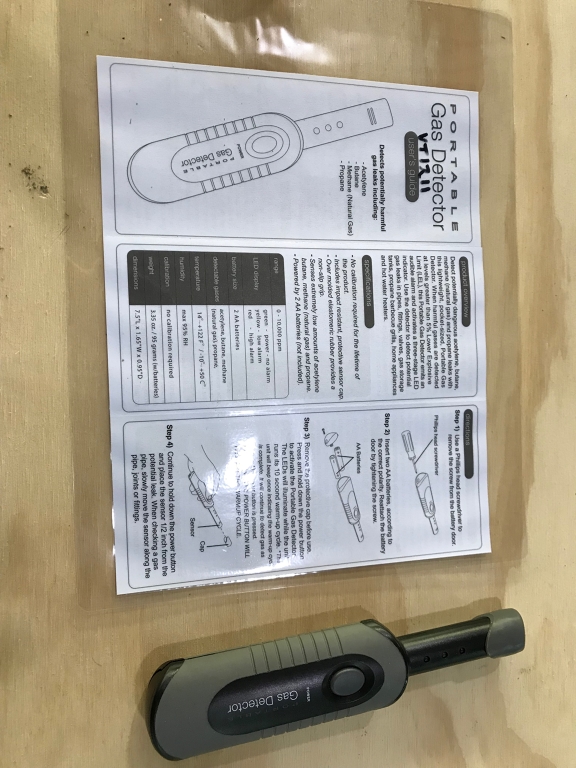
We are always looking for ways to improve our collection, so we welcome suggestions from members for new tools that might be useful. If you have suggestions, send them to [email protected] or drop a note by the tool library
